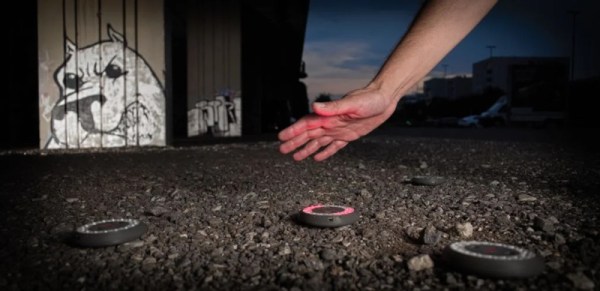There are many different ways to test one’s reaction times; a simple way is to simply drop a ruler and see how far it falls before you can catch it. Take that same concept to a greater level, and you get this impressive “Catch The Stick” game.
The creation of one [Romain Labbe], the build has a wooden frame that holds up several sticks roughly seven feet off the ground. When the game is triggered, a beeper counts down, and then sticks start dropping. Each stick is held in place with a small solenoid-controlled latch, and the game simply energizes the solenoids in turn to drop the sticks randomly. On easier modes, the sticks are released gently, one at a time. On higher difficulty levels, they’re released in a near-continuous stream that would tax even a team of several players.
It’s not a complicated build, but it is very nicely executed. It certainly looks to be good fun to play with friends. Alternatively, you could try out this more distributed-style build. Video after the break.











